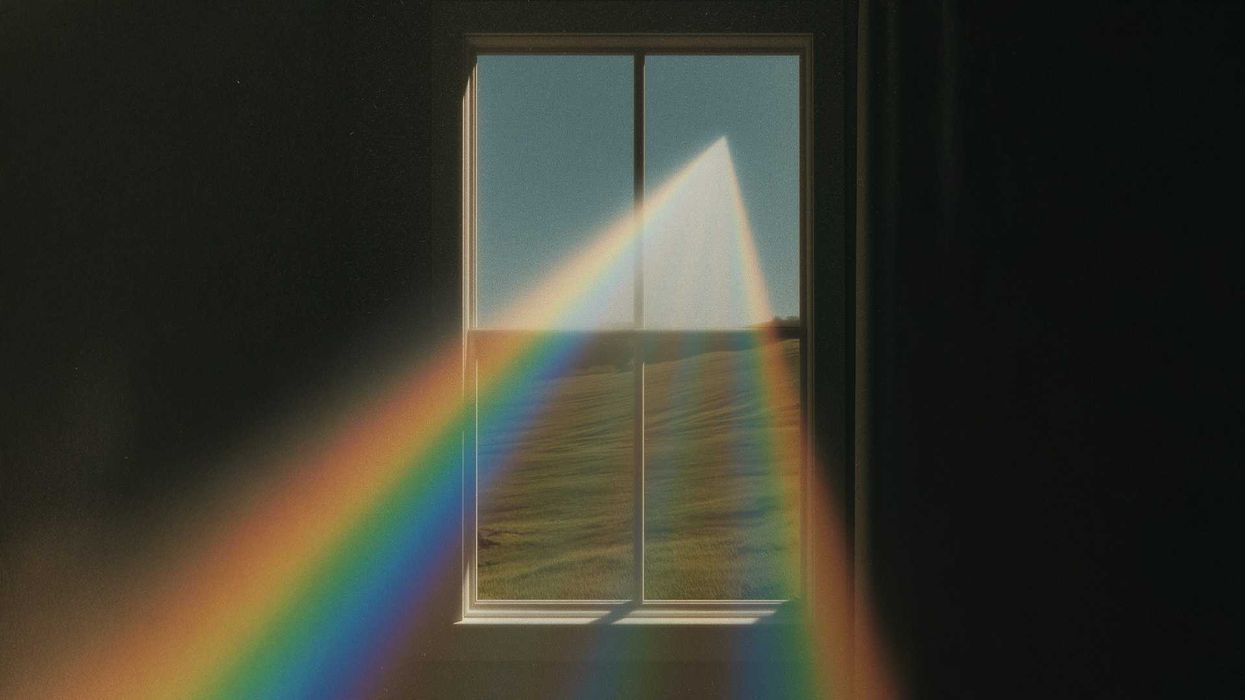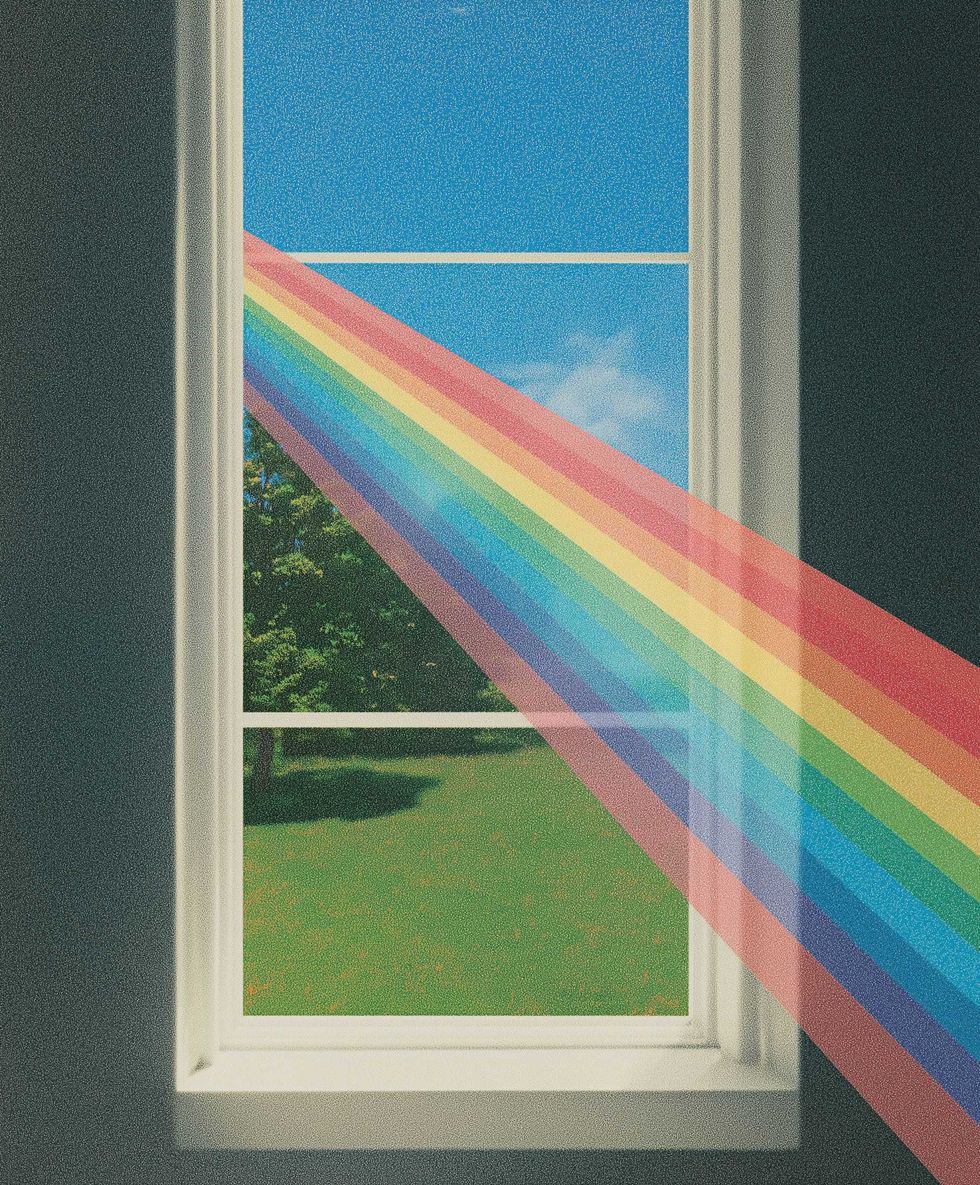
Pax Americana

Forget Hollywood—is this the death of the silver screen?
Early this year, a deluge of mind-blown emojis, mushroom clouds pluming from the shocked confines of their little yellow faces, began to clog “For You” tabs across X (formerlyTwitter). No strangers to the site, these heralds of hype were already a weekly, sometimes daily, presence in the feed. This was how people flagged you down mid-scroll with the promise of a new factoid, new clip, or new product that really wasn’t like the others—one that was about to change everything, or maybe already had. Did you miss it? Did you know? How far behind had you already fallen?
This time, the nukebrains delivered a different kind of message. It wasn’t so over for you, your friends, or your preconceived notions; it was over for the film industry. RIP HOLLYWOOD, the cavalcade of posts proclaimed: GenAI—generative artificial intelligence—was here, now, and cinema would never be the same. Now, with a few quick waves of the techies’ magic wands, “you” could do in fifteen minutes what ad agencies, production companies, and legacy studios had to take hours, days, or weeks to do on set.
And while it only cost you in user credits, the price of a nice lunch at a mid-tier gastropub, for them, well, that would run at least a couple hundred thousand dollars, factoring in development, preproduction, gear, infrastructure, crew, pay scale, union fees, insurance, post-editing, editors, editing bays, overtime, recuts, reshoots, pickups (line-read overdubs added by actors who’d foolishly believed their jobs had ended when the director yelled “cut”)...
As curtains of flame and ash raked across LA’s dark horizon in January, it definitively felt like The End, the final curtain, was coming down, on all of it—the movies, the magic, the noir, the paradise, a hundred years of terminal Manifest Destiny collapsing into a vast and unidentifiable smudge. Venezuelan biker gangs spreading arson and robbery into the valleys and hills; Palisades refugees—upper-middle-class, professional managerial class, Class of 2025—spilling in shellshocked waves down toward the Beach Cities and points beyond; block upon block of pristine Craftsman homes charred down to the studs just a crosswise breeze away from the Rose Bowl and Caltech... this was the stuff of disaster flicks. And now, YOU could bring it to life on the small screen with just a flurry of fingerswipes.
...no matter how hard it's hyped, funded, or memed into existence, people will stay stubbornly uninterested in losing that line between the real and the simulated, the artificial and the natural.
Which is precisely what most of the InstaGlut of AI videos offered: sci-fi fantasies of the distinctly explosive, scorched-earth variety, sizzle demos often culminating in the Earth itself going up like one big nuke-brained emoji...
But it was all—and we’ve seen this movie before, too—some kind of false alarm. Sure, there was carnage, wreckage, mass disturbance, screaming, and gnashing of teeth. Yet, after a stunningly brief rock bottom, it was as if all of LA had checked into rehab “for exhaustion” and came out looking...surprisingly lifelike. Vibrant, even. The cartels recalled the gangs, or something. The kids went back to school, and the parents got on their feet. The air stopped smelling like an abandoned streetside barbecue smoker, and the seashore stopped clogging with megablobs of detritus. The staggering hordes, homeless or, you know, homeless homeless, melted back into the primordial subconscious.
And then, the industry pulled itself back together. Yes, a ton of working cast and crew were still struggling, dropping out, moving away, and yes, the megacorps were still doing megacorp things (merging and then unmerging Warner Brothers and Discovery, rebranding HBO Max to Max, and then re-rebranding Max to HBO Max). However, the manic terror toward GenAI mellowed into a new consensus that the slop-heavy automated animation would settle into the industry mix as one more content stream—akin to the kind of cheap, high-churn fare that film and television companies had long produced with all-human teams.
Those kinds of margins, minus the cost of people, could get Hollywood back to its raison d’etre: unmatched vibes. The impeccable, the rarified, all sorts of feasts for the eye that elevated the mere screen to a plane of art which, especially factoring in the audio part of the audiovisual fare, still touched us like no other medium and no other form of communication... leaving the audience, at best, struck dumb, an experience that must be seen and felt—embodied—to be believed.
And despite it all, the egregious screen-maxxing of the Phone Generations, people—still!—wanted just that experience. The platoons, brigades, and divisions of moviegoers thinned in ranks, to be sure, since COVID’s decimating lockdowns, but redoubled in their determination. Nicole Kidman’s tinny clichés in her AMC Theaters pre-roll (“somehow, heartbreak feels good in a place like this”) became, in a page right out of McLuhan, archetypal. I’m fairly certain that sometime last year, my wife was the first person in the sixth or seventh row at AMC 16 Burbank to let out a theatrical cheer for that piece of in-house propaganda. Now, in any given screening, it’s socially routine, taken part with no more or less irony than the packed sing-along showings of K-Pop Demon Hunters rolled out by Netflix after it was clear their streaming hit was ready to breach containment and inhabit the peopled world.
MUBI, an obscure international art-house film distributor no one had heard of before The Substance, just inked a deal with global venture firm Sequoia for $100 million cold in capital; A24, the auteur-driven, trend-making production and distribution company just spun up an AI arm; storied director Darren Aronofsky just partnered with Google’s DeepMind to put state-of-the-art digital tools in the hands of actually viable filmmakers. The list goes on faster than anyone can keep up.
There’s a reactive wave, too, of course: Universal pledging to sue any AI big that dares to scrape its IP; rank and file creatives griping (with reason) about the bodysnatching tendencies emanating from legacy studios; and turbocharged startups hungry to transform difficult meatsack artists into an army of clones, 2-D for now, already sumptuously submissive and compliant.
But suddenly, movies are interesting again, and the action is here. The mix of players is tantalizing, and the energy is once again electric. Things, maybe the biggest of things, are at stake.

And like any good story, just when you thought it was safe to go back in the water... here comes that shark fin. For all of Hollywood’s sweat-soaked relief that GenAI turned out to be more whale shark than megalodon, out there on the horizon shimmers a grisly twist. Ask some around Silicon Valley, or the techier nodes in LA, and they’ll tell you GenAI is just the beginning, just a rough draft for the real future of entertainment—which, they say, will take us so far and so fast beyond anything merely existing “onscreen” that we’ll soon look on cinema, television, and all the rest as relics as obsolete and forgotten as the zoetrope.
From these fevered minds, we hear that absolutely everything is about to be conquered by full immersion: infinitely playable all-encompassing worlds, made on demand, produced on the fly by AIs with no need for any additional software or hardware, much less cameras, screens, motion capture, game or character design, programmed mechanics. Zip, nada, nothing, poof—“so flawless, so pure, that the line between imagination and reality disappears,” in the words already intoned during the considerably less romantic AMC pre-roll used in its Laser picture theaters. In these showings, it’s my turn to interject at audible volume: “you will descend... into a captive madness beyond your own comprehension... forever a prisoner in a labyrinth of our design..."
It’s funny because, somehow, I’m convinced that no matter how hard it’s pushed, encouraged, hyped, funded, or memed into existence, people will stay stubbornly uninterested in losing that line between the real and the simulated, the artificial and the natural, the alive and the just pretending. Even if the AI rush of an “out-of-body” experience gains a few points of power over a day riding roller coasters or eating six grams of mushrooms. Even if time spent in the simulation chamber edges out the quaint satisfactions of wandering through ancient Alexandria in Assassin’s Creed. And especially if, as so often happens, the primary use case of post-reality, full-immersion tech turns out to be mandatory, military, and existential.
We are innately driven to ask ourselves why, and the answer has a lot less to do with the attractions or addictions of immersivity than it does with the inescapably human phenomenon of full immersion’s balancing opposite: not the experience of total isolation, but the relationship we have with the window.
The window is old—very old, and very wise—though, like so much else that has been with us so long, it is subject to abuse, and abuse it we do. Since ancient days in many corners of the world, the terminology for window has come together in primal compounds: wind-eye, eye-door, breath-door. Since the advent of the screen as we know it, we’ve been entranced above all by the idea that the thing is a portal—not simply a vantage for contemplation, watchfulness, study, reverie, and refreshment, but an exit door leading away from the given creation in which we’ve been placed, into a realm somehow hiding or hidden from us.
This turn, from wind-eye to eye-door to spirit-door, can be traced from relatively more artistic heretics like William Blake—“if the doors of perception were cleansed every thing would appear to man as it is, Infinite”—to relatively more practically minded ones like Elon Musk, prone to approvingly quote the British scientist David Deutsch, who himself lovingly quotes Isaac Asimov’s dead-giveaway ambition to announce “the final end of Eternity, and the beginning of Infinity.” The West’s dismissal of the humble human eye-door, calling us to eternity, in favor of the spirit-door that promises fully immersive endlessness, was already a dead end when Huxley’s run with LSD came to its fruitless end. To rid ourselves of the eye-door is to pluck out our eye in a spiritual sense, and not the one recommended by Christ concerning the eye that insistently sins. The eye is the lamp of the body, but he who fails first to cleanse his heart can hardly expect to cleanse his perception. For that, we must look up to the Eternal One, not out at an Infinite where we always seem to be somewhere, anywhere, but in the stillness of our own heart.
Ironically, it took the advent of digital technology to dethrone the televisual medium from its prior position as the ultimate in (as McLuhan said) “extensions of Man.” Back then, we were, in a sense, all the guy who ran down the center aisle in the early screening of Kubrick’s 2001: A Space Odyssey, screaming (on acid) “I SEE GOD!” as he crashed through the screen. Now? You might notice today’s younger audiences seem to have no trouble distinguishing cinema, however engrossing, from reality, however dull. The urge to recover the movies as a communal look through a window, not as a personal portal, goes deep to the very heart of the given human identity—one no amount of technology can wipe away without us first deploying it to efface our very selves.
James Poulos
BlazeTV Host